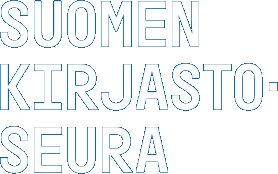If we start to measure the value of art or libraries in terms of money, our society is on the road to disaster.
![]() IT IS NOT an exaggeration to say that values have become increasingly materialistic during the past twenty or so years. Everything is measured in money. In addition to children and the elderly, traditional cultural institutions, such as the library, also suffer from the effects of this development. The common denominator for children, the elderly and the library is that they bring joy, happiness and wisdom to our society but not cold, hard cash.
IT IS NOT an exaggeration to say that values have become increasingly materialistic during the past twenty or so years. Everything is measured in money. In addition to children and the elderly, traditional cultural institutions, such as the library, also suffer from the effects of this development. The common denominator for children, the elderly and the library is that they bring joy, happiness and wisdom to our society but not cold, hard cash.
ACCORDING TO Erkki Karvonen, Professor of Information and Communication Studies (pp 8–10), this development is a result of the neo-liberal social values that spread in Finland in the 1980s. At that time, market economy principles started to be applied to the public sector. “Today’s market-oriented values and technological development have led to a situation in which quite a few traditional services or institutions face a legitimacy crisis. You have to justify your right to exist,” Karvonen says.
WHEN you read magazines like Taide (Art) or visit library professionals’ discussion forums, you can sense frustration and despair. If we start to measure the value of art or libraries in terms of money, our society is on the road to disaster. Culture brings a lot of good things to us, but it does not receive money in return.
WE ARE being persuaded to buy the idea of having a Guggenheim Museum in Finland with promises of high profits in the form of art tourism. A municipal library is not a tourist trap, but it certainly brings economic wellbeing to its environment. The impact of a library is, however, indirect, and therefore it is difficult to prove in a credible manner.
ON THE OTHER HAND, one may ask how sensible it is to measure the value of a library in terms of money.
IN HIS BOOKVisible Hand: Towards the Economy for Common Good (2013), Christian Felber, Professor of Economy at the University of Vienna, offers a socially fairer economy for common good instead of today’s market economy, which fosters selfishness. In the Common Good model, stock exchange value is replaced by use value as a measure of economic success, i.e. the basis for measuring the economic success of a company is its usefulness to society rather than stock exchange figures. In this model, fair companies which take care of their employees and pay their taxes are rewarded, and exploitative companies which operate on selfish principles are sanctioned.
IN HIS BOOK, Felber also lists the indicators that can be used to measure the output of common good. The measurement is based on five values: human value, solidarity, ecological sustainability, social justice and democracy.
THE CITY LIBRARY OF HELSINKI is seeking funding for a research project to establish how the economic impact of libraries can be measured. The idea behind the initiative is probably the need to justify the necessity of libraries to those who do not understand their value. Maybe a better idea would be to measure the impact of the common good provided by libraries. That, for sure, would be impressive.

